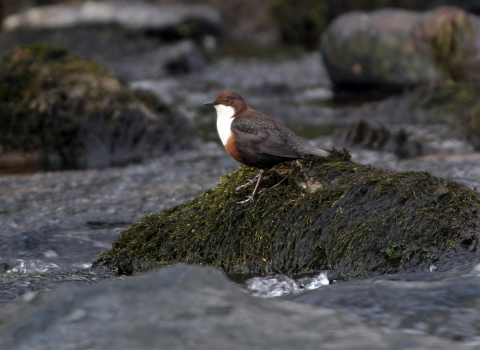Yarty Moor - Sarah Fox
Know before you go
Dogs
Visit the 'Dog walking on reserves' page in the Contact section for more information.
When to visit
Opening times
Open at all timesBest time to visit
April to JulyAbout the reserve
This reserve forms part of the headwaters of the River Yarty and is very wet for most of the year. It is one of the best remaining examples of a springline mire in Somerset. It contains a rich mosaic of wet heath, bog pools and birch/willow carr grading into acid marshy grassland. These communities support several species of plant which are rare in the county.
The River Yarty is about 26 kilometres (16 mi) long and several springs and flushes in the area are its source including SWT Yarty Moor. It flows on a roughly southern course briefly forming the boundary between Devon and Somerset, then between Devon and Dorset. It continues to form a river valley for much of the rest of its course until it meets the River Axe just southwest of Axminster.
Although this is a very wet site it is well worth exploring to find the wonderful wetland wildlife that occurs here. Look out for Bogbean, Early Marsh and Heath Spotted Orchids. The delicate, pink Ragged Robin also occurs. The butterflies Marsh Fritillary and Small pearl-bordered Fritillary occur as does the Keeled Skimmer dragonfly.
Wet ground plants found here include Bog Asphodel, Common Cotton Grass, Marsh St Johns Wort, Marsh Violet, Marsh Pennywort, the insectivorous Round Leaved Sundew and Pale Butterwort. Commoner damp ground plants include Marsh Marigold, Cuckoo Flower and Greater Bird’s-foot Trefoil. Surrounding many of the bog pools are mats of Sphagnum mosses which often developing into large hummocks amongst which grow White Beak-sedge and Deer Grass.
Where the ground is slightly drier but still damp Cross-leaved Heath, Purple Moor Grass, Heath Milkwort, Tormentil and Lesser Butterfly Orchid grow. Other orchids found on the reserve are Spotted, Southern Marsh and Narrow Leaves Marsh. In places, this wet heath has been colonised by Birch and Willow.
Chert rocks are scattered across the reserve and are a distinctive landscape feature here. The many small pools attract many damsel and dragonflies including the Keeled Skimmer, Golden Ringed Dragonfly and the Broad Bodied Chaser.
Yarty Moor is important as a wintering ground for Snipe and Woodcock.
Reserve conservation management – Livestock grazing all year round plus scrub control.
Yarty Moor is also close to Mount Fancy Farm Butterfly Conservation Reserve, FC Castle Neroche and NT Wellington Monument.


